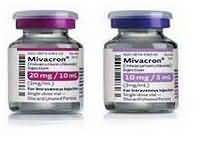CLINICAL USE
Non-depolarising muscle relaxant of short duration
DOSE IN NORMAL RENAL FUNCTION
IV injection: 70–250 micrograms/kg; maintenance 100 micrograms/kg every 15 minutes
IV infusion
: maintenance of block 8–10 micrograms/kg/minute, adjusted to maintenance dose of 6–7 micrograms/kg/minute according to response
PHARMACOKINETICS
DOSE IN RENAL IMPAIRMENT
GFR (mL/MIN)
DOSE IN PATIENTS UNDERGOING RENAL REPLACEMENT THERAPIES
IMPORTANT DRUG INTERACTIONS
Potentially hazardous interactions with other drugs
ADMINISTRATION
Reconstition
_
Route
IV bolus,
IV infusion
Rate of Administration
IV bolus: Doses of up to 0.15 mg/kg may be administered over 5–15 seconds. Higher doses should be administered over 30 seconds
Comments
Compatible with sodium chloride 0.9%; glucose 5%; dilute to 500 micrograms/mLCompatible with fentanyl, alfentanil, droperidol and midazolam
OTHER INFORMATION
Spontaneous recovery is complete in approximately 15 minutes and is independent of dose administeredIn patients with CKD 5 the clinically effective duration of block produced by 0.15 mg/kg is approximately 1.5 times longer than in patients with normal renal function; hence, dosage should be adjusted according to individual clinical responseResults from a study comparing 20 anephric patients with 20 healthy patients highlight the need for reduced dosages of Mivacron in patients with renal failure: patients with renal failure had a slightly shorter time to maximum depression of T1/T0, a slower recovery of T1/T0 to 5% (15.3 vs 9.8 min), required a slower infusion rate (6.3 vs 10.4 micrograms/kg/min) and experienced slower spontaneous recovery (12.2 vs 7.7 min). The drug company has no specific guidelines as to the extent of dose reduction required.
